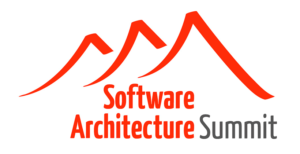WebAssembly & Progressive Web Apps – Next Generation Apps
Gesetzt den Fall, Sie halten Cross-Plattform SPAs (Single Page Applications) für eine gute Idee, könnte diese Night Session in der Tat interessant für Sie werden. Lassen Sie uns über das Web als Plattform reden und darüber, wie wir JavaScript-basierte Browseranwendungen unter Umständen noch "besser" machen können. Die Web- und Browserplattformen haben die Art und Weise verändert, wie wir Anwendungen erstellen können, und diese Plattformen haben sich in den letzten 5 Jahren erheblich weiterentwickelt. Für SPAs, die im Browser laufen, stehen mehr und mehr native Funktionen zur Verfügung – eine großartige Basis für moderne Applikationen gemäß der Idee von Progressive Web Apps (PWA). Zudem haben wir mit dem zunehmenden Reifegrad von WebAssembly (WASM) als Standard allmählich leistungsstarke Tools in unserer Hand, um die nächste Generation von webbasierten Anwendungen zumindest mal anzudenken. In dieser Night Session wird Christian Weyer sowohl über PWAs als auch über die Basis und Möglichkeiten von WebAssembly als Bytecode für alle gängigen modernen Browser sprechen. Erfahren Sie, wie Sie WASM zum Ausführen von C/C++, Java oder C#/.NET-Code im Browser ohne Plug-in nutzen können – sei es aus Performance- oder Wiederverwendungsgründen. Dies kann sowohl bei Greenfield- als auch bei Brownfield-Projekten ein interessanter Ansatz sein. Lehnen Sie sich zurück und schauen Sie zu, welche Möglichkeiten PWAs und WebAssembly dem Web verleihen könnten.
Event

Slidedeck
Weitere Artikel zu Blazor, PWA, WebAssembly


AI-Funktionen zu Angular-Apps hinzufügen: lokal und offlinefähig

gRPC Code-First mit ASP.NET Core 7 und Blazor WebAssembly

Blazor WebAssembly in .NET 7: UI-Performance-Optimierung auf Komponentenebene


Understanding and Controlling the Blazor WebAssembly Startup Process


Adding Superpowers to your Blazor WebAssembly App with Project Fugu APIs
Whether you're a seasoned Blazor developer or just getting started, this article will help you add superpowers to your Blazor WebAssembly app.


